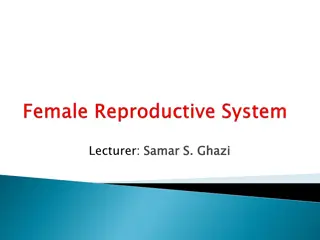
Understanding Joint Probability Distribution in Statistics
Explore the concept of joint probability distribution for discrete and continuous random variables, along with relevant properties and examples. Learn how to calculate joint probabilities and understand distributions of two or more random variables in various scenarios. Dive into problems related to marginal distribution and enhance your knowledge of probability theory.
Uploaded on | 2 Views
Download Presentation

Please find below an Image/Link to download the presentation.
The content on the website is provided AS IS for your information and personal use only. It may not be sold, licensed, or shared on other websites without obtaining consent from the author. If you encounter any issues during the download, it is possible that the publisher has removed the file from their server.
You are allowed to download the files provided on this website for personal or commercial use, subject to the condition that they are used lawfully. All files are the property of their respective owners.
The content on the website is provided AS IS for your information and personal use only. It may not be sold, licensed, or shared on other websites without obtaining consent from the author.
E N D
Presentation Transcript
JITENDRA KUMAR PATI Associate Professor Dept. Of Math RECAP D I S C R E T E P R O B A B I L I T Y D I S C R E T E P R O B A B I L I T Y D I S T R I B U T I O N D I S T R I B U T I O N C O N T I N U O U S P R O B A B I L I T Y C O N T I N U O U S P R O B A B I L I T Y D I S T R I B U T I O N D I S T R I B U T I O N R E L A T E D P R O B L E M S R E L A T E D P R O B L E M S
L E C T U R E - 8 OUTLINE Joint Probability Distribution Discrete and continuous Distribution Relevant Properties Examples
JOINT PROBABILITY DISTRIBUTION Distributions of two or more random variables are of interest for two reasons: They occur in experiments in which we observe several random variables, for example, carbon content X and hardness Y of steel, amount of fertilizer X and yield of corn Y, height weight and blood pressure of persons, and so on. In this section we consider two random variables X and Y or, as we also say, a two dimensional random variable (X,Y). For(X,Y) the outcome of a trial is a pair of numbers X=x, Y=y briefly(X,Y)=(x,y) which we can plot as a point in the XY-plane. A discrete bivariate random variable (X, Y ) is an ordered pair of discrete random variables.
Let (X, Y ) be a bivariate random variable and let RX and RY be the range spaces of X and Y , respectively. A real-valued function Let (X, Y ) be a discrete bivariate random variable. Let
E X A M P L E S Example: Roll a pair of unbiased dice. If X denotes the smaller and Y denotes the larger outcome on the dice, then what is the joint probability density function of X and Y ?
MORE EXAMPLES A group of 9 executives of a certain firm include 4 who are married, 3 who never married, and 2 who are divorced. Three of the executives are to be selected for promotion. Let X denote the number of married executives and Y the number of never married executives among the 3 selected for promotion. Assuming that the three are randomly selected from the nine available, what is the joint probability density function of the random variables X and Y ?
PROBLEMS ON MARGINAL DISTRIBUTION Let X and Y be discrete random variables with joint probability density function
JOINT PROBABILITY DENSITY FUNCTION A real valued function f of two variables is a joint probability density function of a pair of discrete random variables X and Y (with range spaces RX and RY , respectively) if and only if For what value of the constant k the function given by
J O I N T C U M U L A T I V E P R O B A B I L I T Y D I S T R I B U T I O N
BIVARIATE CONTINUOUS RANDOM VARIABLE The joint probability density function of the random variables X and Y is an integrable function f(x, y) such that
Q U E S T I O N A R I E S A N D F E E D B A C K




















